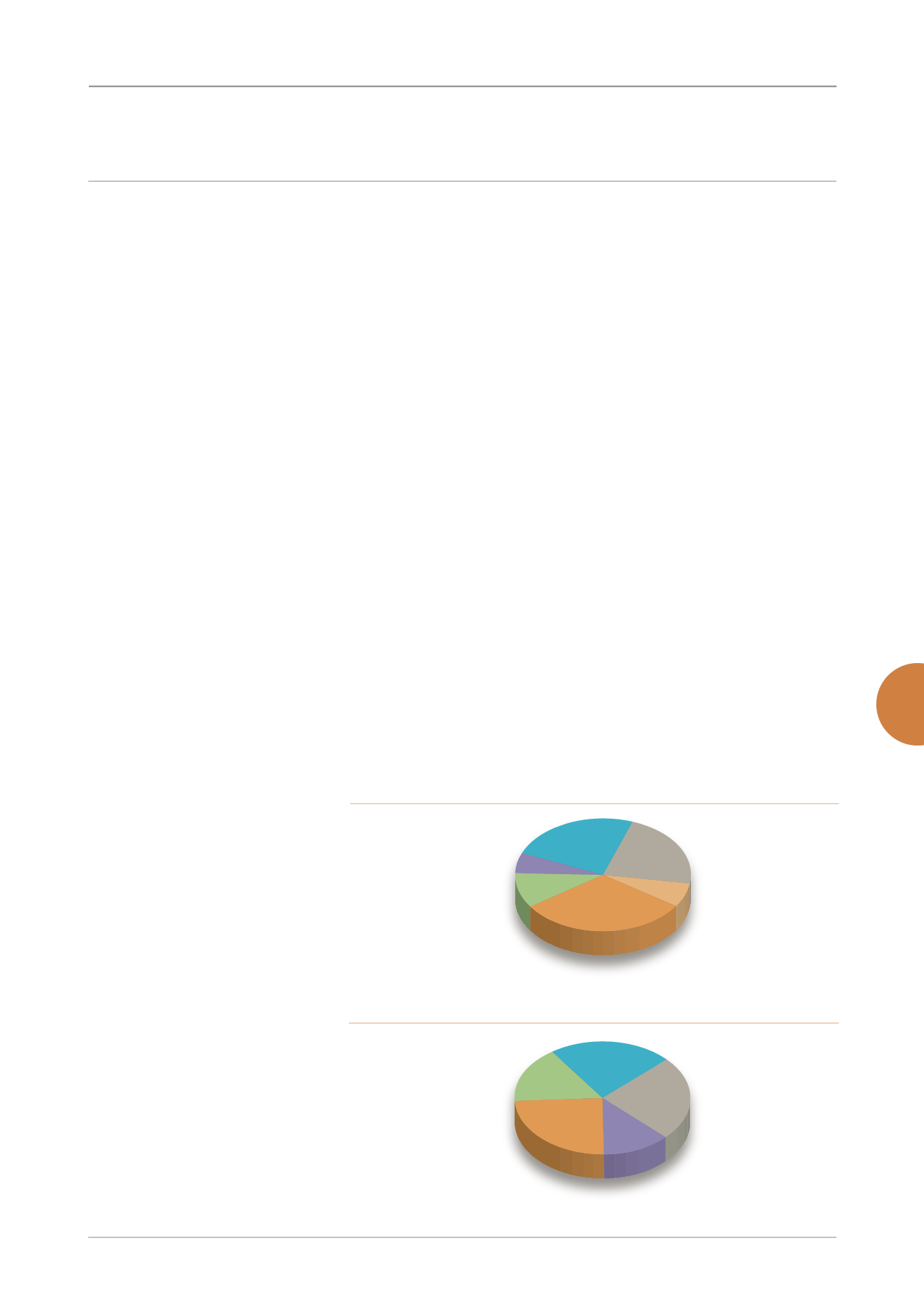

39
3
Operations
Microenterprise Creation and
Microcredit, exclusive to Burkina
Faso and Haiti; and a Workshop on
Agricultural Marketing—Operations
of Farmers’ Groups and Cooperative
Marketing and Production, exclusive
to St. Vincent and the Grenadines.
The distribution of workshops held
during 2014 by sector and number
of participants was as follows: public
health and medicine, one class of
23 participants (6%); environmental
protection, four classes for a total of
96 participants (24%); education,
four classes for a total of 88
participants (22%); ICT, one class
of 26 participants (7%); agriculture,
forestry, aquaculture and animal
husbandry, seven classes for a total
of 126 participants (31%); and trade
and economics, two classes for a
total of 39 participants (10%).
International Higher
Education Scholarship
Program
The TaiwanICDF’s International
Higher Education Scholarship
Program was established in 1998.
Offering all-English programs and
curricula as part of a full scholarship,
the program brings students from
partner countries to Taiwan in
order to assist partner countries
in developing the professional
talent required for their social
and economi c deve l opmen t .
The TaiwanICDF integrates core
assistance themes, Taiwan’s own
advantages and partner countries’
development needs to promote the
effectiveness of the program and
thereby enhance and expand the
effectiveness with which partner
countries’ human resources can
continue to develop.
As of the end of 2014, the
TaiwanICDF was cooperating with
21 Taiwanese universities, offering
33 undergraduate and postgraduate
degree programs over a wide range
of academic disciplines such as
agriculture, engineering, business
administration, social sciences,
and public health and medicine.
Some 1,335 foreign students had
benefitted from the program, while
488 students from 36 countries were
studying in Taiwan. The number of
students enrolled by subject was
as follows: agriculture, 79 students
(16.19%); engineering, 111 students
(22.75%); business administration,
118 students (24.18%); social
sciences, 62 students (12.7%); and
public health and medicine, 118
students (24.18%).
Four new study programs added
to the scholarship program in 2014
included an English-taught Bachelor
Program in Medical Laboratory
Sciences and Biotechnology at
Kaohsiung Medical University,
a nd t h r e e Ma nda r i n - t a ugh t
undergraduate programs at the
Department of Computer Science
and Information Engineering,
National Dong Hwa University; the
Department of Environmental Biology
and Fisheries Science, National
Taiwan Ocean University; and the
Department of Civil Engineering,
National Cheng Kung University.
The Mandarin-taught programs aim
to provide overseas students with
more choices while studying for their
degree in Taiwan.
Starting in 2013, the TaiwanICDF
also held the Mandarin Scholarship
Program for the Dominican Republic
so as to accommodate this partner’s
needs in terms of Mandarin learning.
The purpose o f t he program
was to provide scholarships for
talented young Dominicans to study
mandarin in Taiwan. Through an
intensive, one-year curriculum that
incorporated small class sizes, a
dedicated manager, study guidance,
Figure 2 Workshops by Sector (2014)
Trade and Economics 10%
Public Health and Medicine 6% ......
Environmental Protection 24% ...........
......
Public Health and
Medicine 24.18% ............
Agriculture 16.19% ............
31% Agriculture, Forestry,
Aquaculture and Animal
Husbandry
22% Education
7% ICT
...........
............
.........................
12.7% Social Sciences
22.75% Engineering
24.18% Business
Administration
............................
........
.........................
Figure 3 Students Enrolled in the International Higher Education
Scholarship Program by Subject (2014)
Trade and Economics 10%
Public Health and Medicine 6% ......
Environmental Protection 24% ...........
......
Public Health and
Medicine 24.18% ............
Agricultur 16.19% ............
31% Agriculture, Forestry,
Aquaculture and Animal
Husbandry
22% Education
7% ICT
............
.........................
12.7% Social Sciences
22.75% Engineering
24.18% Business
Administration
............................
........
.........................


















